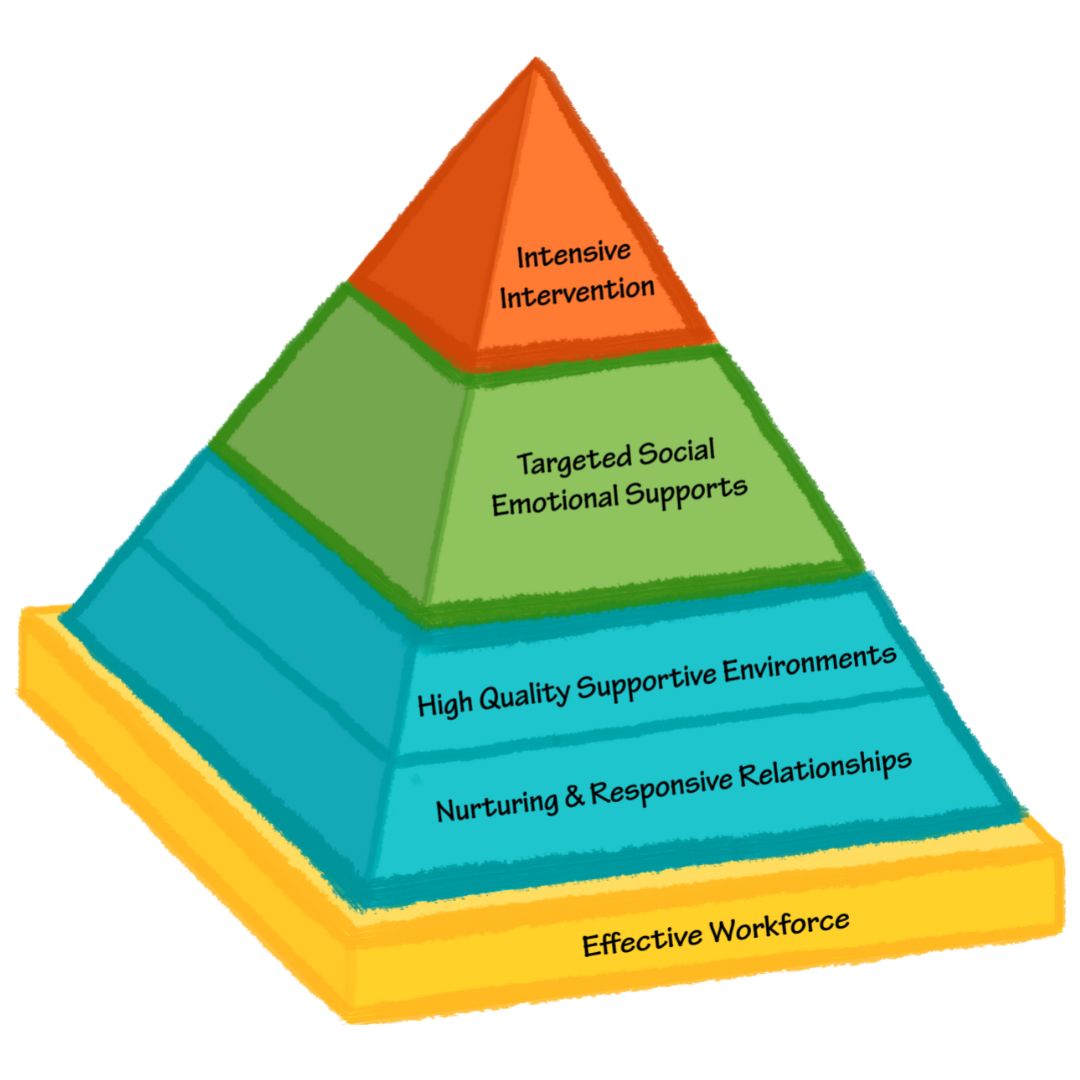Utah Pyramid Model
A Social Emotional Program for Early Childhood Settings
The Basics
- Intensive Intervention
- Targeted Social Emotional Supports
- High Quality Supportive Environments
Nurturing & Responsive Relationships - Effective Workforce

What is the Pyramid Model?
The Pyramid Model is a conceptual framework of evidence-based practices for promoting young children's health social and emotional development and decrease child challenging behavior.
Who uses the Pyramid Model?
The Pyramid Model provides guidance for
- early childhood special education personnel
- early intervention personnel
- early educators
- families
- other professionals
Who created the Pyramid Model?
The Pyramid Model was developed by two national, federally-funded research and training centers: The Center for the Social and Emotional Foundations for Early Learning (CSEFEL) and Technical Assistance Center on Social Emotional Intervention for Youth Children (TACSEI). These centers’ faculty represent nationally recognized researchers and program developers in the areas of social skills and challenging behavior.
What is the Utah vision of the Pyramid Model?
All early childhood settings support the social and emotional development and inclusion of every child, birth through eight years of age.
Tried & Tested Results
Based on over a decade of evaluation data, the Pyramid Model has shown to be a sound framework for early care and education systems.
Cost
The Utah Pyramid Model and associated services are free!
What we offer:
- Pyramid Model Training, online and in-person
- An external coach who will...
- Work with site to help implementation
- Mentor internal coaches
- Support implementation plans for benchmarks of quality
- Access to the Infant Early Childhood Mental Health (IECMH) consultants to address the needs of children with persistent challenging behaviors, their families, and their practitioners
Now let's take a closer look at each level of the Pyramid Model.
Contact Us!
Fill out this short form and we will send you additional information and how to get started.

